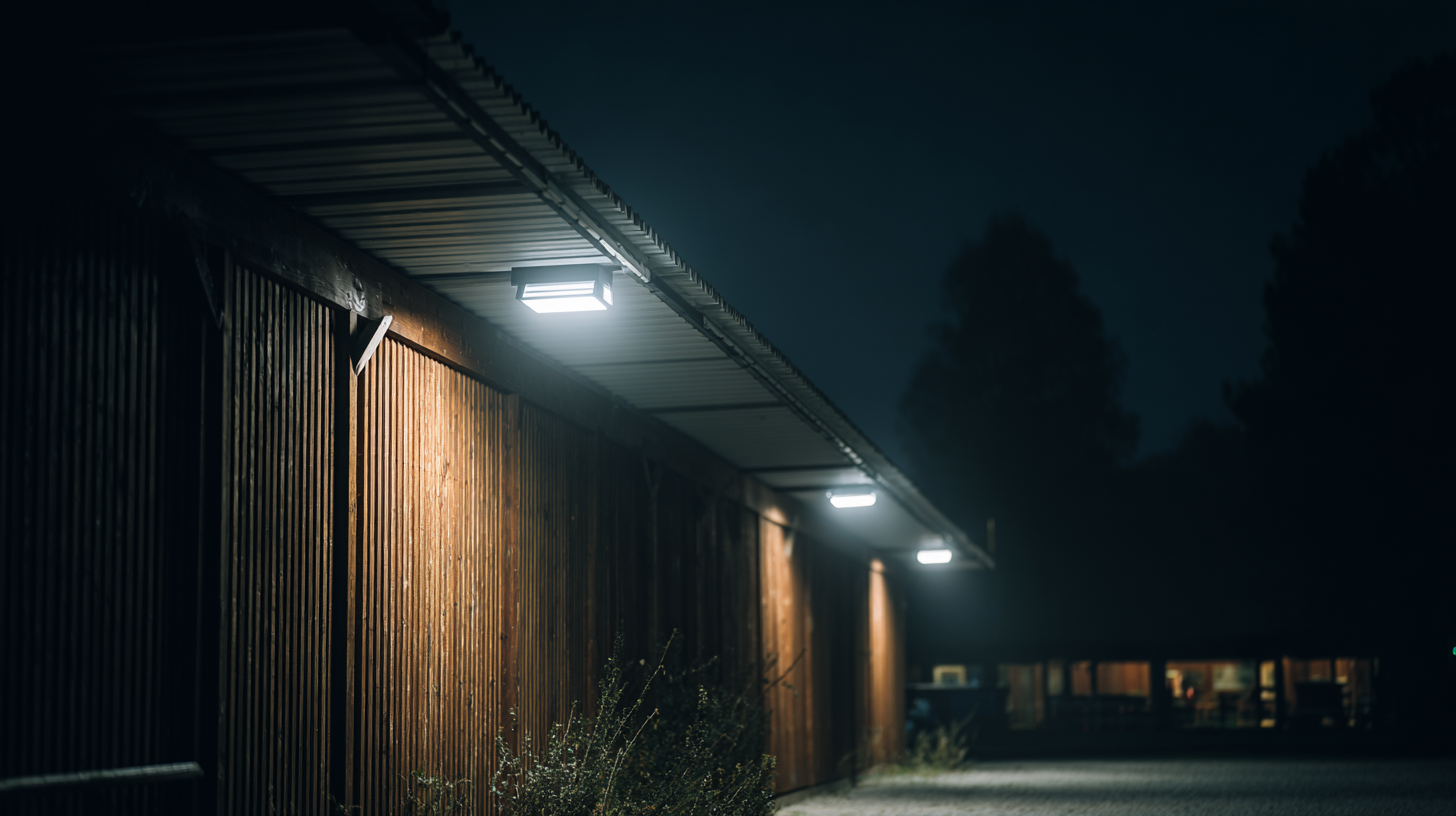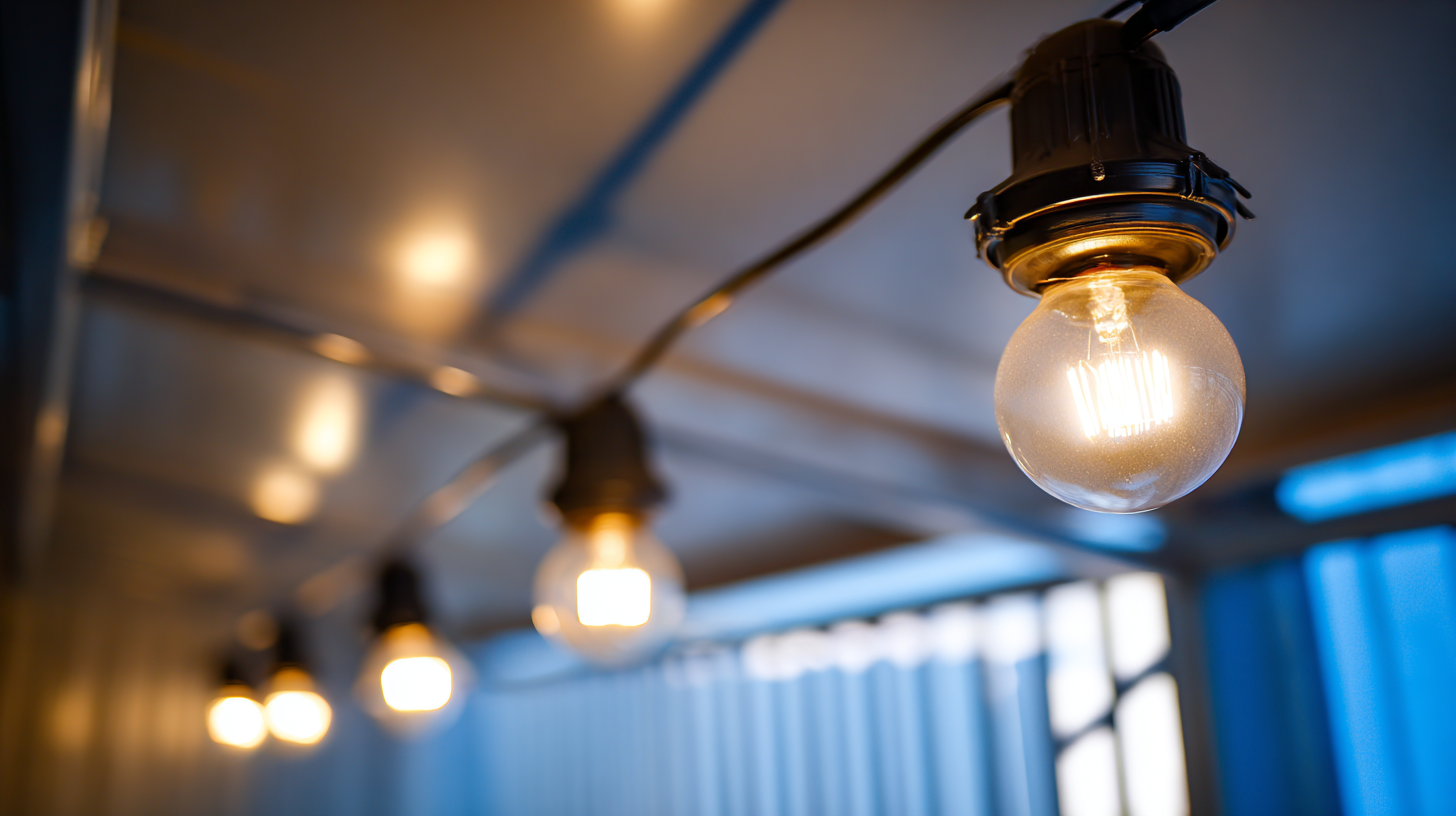Understanding Industry Standards for the Best Solar Shed Lights
In today's eco-conscious world, harnessing solar energy is becoming increasingly popular, and one of the most innovative applications of this renewable resource is in solar shed lights. These lighting solutions not only offer an energy-efficient way to illuminate your outdoor spaces but also cater to a variety of needs, from enhancing the ambiance of your garden shed to providing necessary visibility in your workshop. However, with a myriad of options available, understanding industry standards for solar shed lights is crucial to selecting the right product for your specific requirements. This guide aims to demystify the key factors you should consider when choosing solar shed lights, ensuring you make an informed decision that enhances both functionality and aesthetic appeal in your outdoor environment. Whether you are looking for durability, brightness, or ease of installation, being knowledgeable about these industry standards will empower you to pick the best solar shed light that suits your needs.

Understanding the Importance of Solar Shed Lights in Sustainable Energy Solutions
Solar shed lights play a crucial role in sustainable energy solutions by offering an eco-friendly lighting alternative that reduces reliance on fossil fuels. According to a report by the International Renewable Energy Agency (IRENA), the global solar energy sector has experienced a steady growth rate of around 20% annually over the past decade. This surge illustrates a significant shift towards renewable energy sources, making solar shed lights not only a practical choice for outdoor spaces but also an essential component in advancing sustainability efforts.
Furthermore, the adoption of solar-powered lighting systems has been linked to increased energy efficiency. A study by the U.S. Department of Energy (DOE) highlighted that solar lights can reduce energy consumption by up to 75% compared to traditional lighting options. This efficiency translates into lower electricity bills and a reduced carbon footprint. By utilizing solar shed lights, consumers contribute to a greener future, harnessing the power of the sun to illuminate their spaces without compromising on performance or environmental responsibility.
Key Industry Standards for Solar Lighting: What to Look For
 When selecting solar shed lights, understanding key industry standards is crucial to ensure optimal performance and durability. One of the most important standards to consider is the efficacy of the solar panel. According to a report by the National Renewable Energy Laboratory (NREL), high-efficiency panels typically convert around 15-22% of sunlight into usable energy, significantly affecting the brightness and longevity of solar lighting solutions. Look for lights that utilize polycrystalline or monocrystalline technology, as they generally provide superior performance and reliability.
When selecting solar shed lights, understanding key industry standards is crucial to ensure optimal performance and durability. One of the most important standards to consider is the efficacy of the solar panel. According to a report by the National Renewable Energy Laboratory (NREL), high-efficiency panels typically convert around 15-22% of sunlight into usable energy, significantly affecting the brightness and longevity of solar lighting solutions. Look for lights that utilize polycrystalline or monocrystalline technology, as they generally provide superior performance and reliability.
Another essential factor to evaluate is the IP (Ingress Protection) rating, which indicates the light's resistance to dust and moisture. For outdoor applications like sheds, an IP rating of at least IP65 is recommended, as it assures protection against water jets and dust ingress. A study by the International Electrotechnical Commission (IEC) underscores that products meeting these ratings demonstrate greater resilience in harsh weather conditions, extending their lifespan and reducing the need for frequent replacements.
Battery life is also a critical consideration. Industry standards suggest that high-quality solar lights should have lithium-ion batteries that support more than 500 charge cycles, offering better performance than standard nickel-cadmium batteries. According to research from the Solar Energy Industries Association (SEIA), advancements in battery technology are improving energy storage capabilities, resulting in brighter lights that last longer during the night. By focusing on these key standards, consumers can make informed decisions when investing in solar shed lights.
Comparing Efficiency Metrics: Lumens Per Watt in Solar Shed Lights
When choosing solar shed lights, efficiency metrics such as lumens per watt play a crucial role in determining the best options available. Lumens measure the total amount of visible light emitted by a source, while watts indicate the energy consumption. Therefore, a higher lumens-per-watt ratio signifies a more efficient light source, which is especially important for solar-powered applications where maximizing output while minimizing input energy is key.
Different solar shed lights vary significantly in their efficiency ratings. For example, some models may only produce around 50 lumens per watt, making them less desirable for extensive usage. In contrast, higher-quality units can achieve upwards of 100 lumens per watt or more. This means they can provide better illumination while harnessing the energy from sunlight more effectively, ultimately leading to cost savings and improved performance over time. As consumers increasingly seek sustainable lighting solutions, understanding these efficiency metrics becomes vital for making informed purchasing decisions and reducing energy waste in outdoor spaces.
The Role of Battery Technology in Enhancing Solar Shed Light Performance
When it comes to solar shed lights, battery technology plays a crucial role in determining performance and efficiency. Modern solar lights rely on batteries to store energy collected from sunlight, allowing them to function even during cloudy days or at night. Lithium-ion batteries have become increasingly popular due to their high energy density and longer life span compared to traditional lead-acid batteries. These advancements in battery technology not only improve the brightness and duration of solar shed lights but also enhance their overall reliability.
Tip: When selecting solar shed lights, consider models that feature lithium-ion batteries for optimal performance. Moreover, look for models with built-in solar charge controllers, which help prevent overcharging and prolong battery life.
Additionally, the integration of smart technology is revolutionizing how battery systems are used in solar lights. Smart solar lights can adjust brightness based on environmental conditions and even allow for remote monitoring through mobile apps. This flexibility not only saves energy but also ensures that the light output matches user needs and preferences.
Tip: Opt for smart solar shed lights if you want increased control over your lighting setup and the ability to monitor performance in real-time.
Innovative Features of High-Quality Solar Shed Lights: Addressing User Needs
When exploring high-quality solar shed lights, it's essential to highlight the innovative features that address user needs effectively. One of the standout characteristics of these lights is their adaptability to various weather conditions. Many modern solar shed lights are built with durable materials and weather-resistant designs, ensuring they can withstand rain, snow, and extreme temperatures. This resilience not only enhances longevity but also guarantees consistent performance, allowing users to enjoy well-lit spaces year-round.

Additionally, energy efficiency remains a pivotal consideration for users. High-quality solar shed lights often incorporate advanced LED technology, which not only provides bright illumination but also minimizes energy consumption. Some models feature motion sensors and adjustable brightness levels, enabling homeowners to customize their lighting based on specific needs and reduce energy usage when unnecessary. This user-centric approach not only addresses lighting requirements but also aligns with growing environmental concerns, making solar shed lights an attractive, sustainable choice for any outdoor space.


 When selecting solar shed lights, understanding key industry standards is crucial to ensure
When selecting solar shed lights, understanding key industry standards is crucial to ensure 